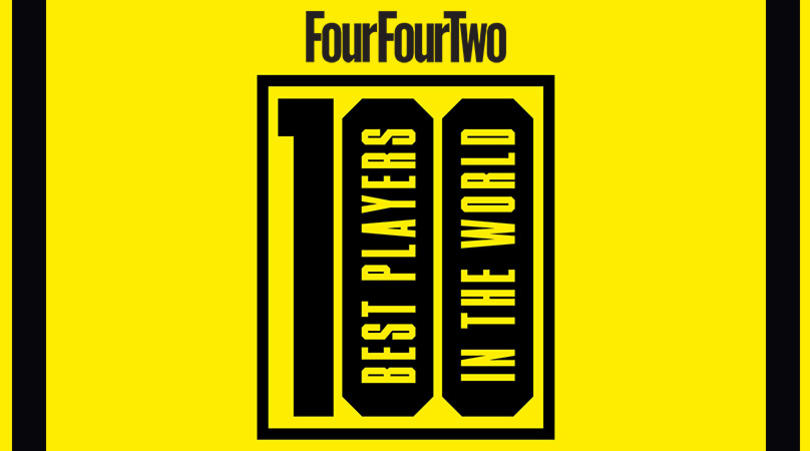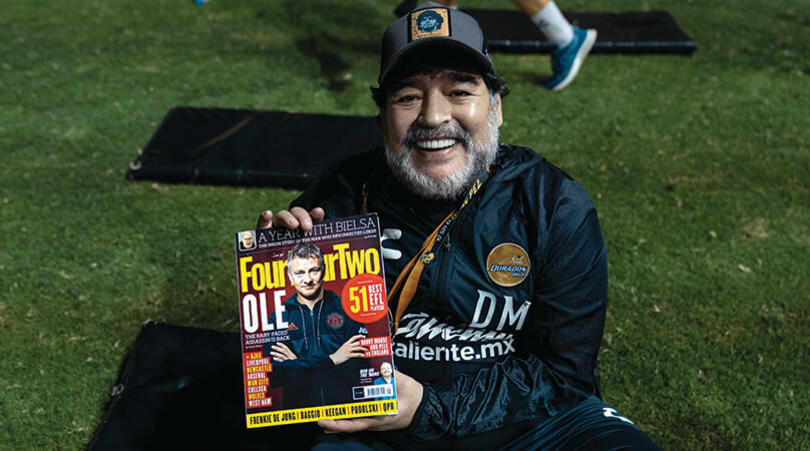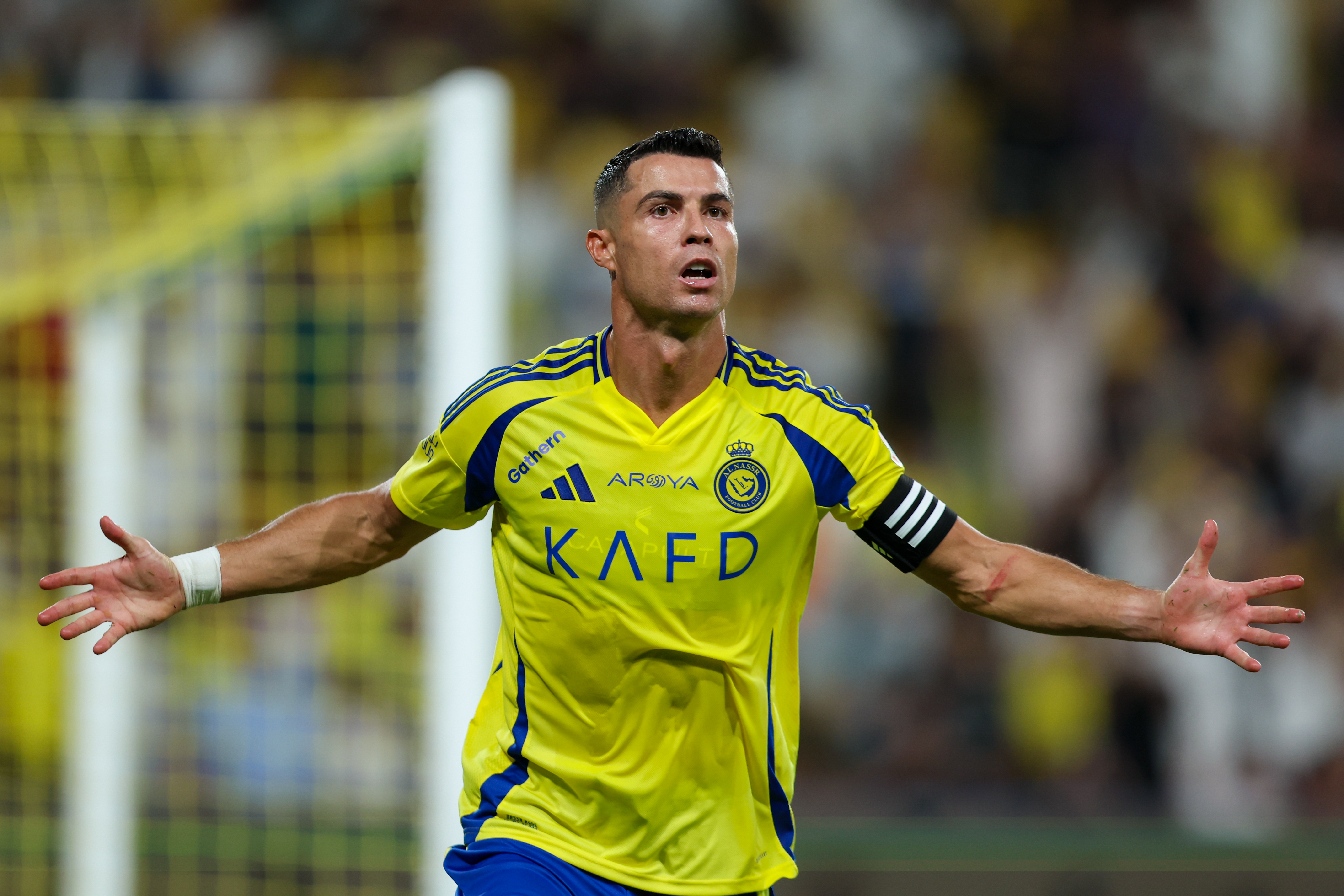FourFourTwo in Monterrey: How Liverpool’s opponents ended their "curse" to reach the Club World Cup
May’s CONCACAF Champions League final was also one of the world’s biggest derbies, as Monterrey took on Tigres. Andy Mitten was there to see the madness unfold
This article first appeared in the August 2019 issue of FourFourTwo. Subscribe to the magazine now for £9.50 every three months – just £2.90 an issue!
Monterrey wasn’t supposed to be like this. It’s two hours until the second leg of the CONCACAF Champions League final, a derby between Monterrey and Tigres in Mexico’s third-biggest city. Think Manchester United and City or Liverpool and Everton clashing in a two-legged European Cup final. We had been sold a vision of passion and crazy fans set against a backdrop of verdant mountains and a stunning new stadium. The 53,500-capacity BBVA Bancomer certainly fits the bill, the mountain backdrop too, but outside the ground it’s about as rowdy as a Coldplay acoustic set.
Everyone looks so healthy and wealthy, so Californian, with whitened teeth. The ladies are all enhanced breasts and caramel tans, and there are families aplenty too, waiting patiently to welcome the Monterrey team bus into their home. The odd yellow-shirted Tigres supporter gets a gentle ribbing about not really being from Monterrey (Tigres are from the adjoined city of San Nicolas de los Garza – think West Bromwich and Birmingham, or Croydon and London) and not winning any international cup competitions. They laugh it off.
No one – yes, no one – drinks alcohol as fans chat among friends and politely stand behind the line as instructed by police. Higher up, between the ground and a monitoring police helicopter, people wait patiently on an overpass draped in blue and white flags.
This is a marketeer’s dream football demographic: shiny, happy and beautiful people, but all a little prawn sandwich, and our photographer has her work cut out as she mingles with the crowd.
The original thought was that Mexico would be dangerous and we’d use a snapper used to working in the theatres of war. It wasn’t the first time we’d be wrong about Mexico.
Two men approach. FFT stands out like a sore thumb because we’re not wearing the blue of Monterrey, and the press pass is also a giveaway.
Get FourFourTwo Newsletter
The best features, fun and footballing quizzes, straight to your inbox every week.
“Where are you from?” a forty-something asks with calm authority.
“England.”
“Why are you here?” says his mate.
“Journalist. To write about this game.”
“Do you have any ID? We work for the police here.”
A press card is presented. The men, who aren’t wearing uniform, are at ease and small talk ensues.
“There’s no story for you here,” explains one, Alfonso, who is holding a camera. “I’m a police photographer and this is my boss. If you want to come with me, I’ll take you where the story is. It’s a 10-minute walk in that direction and it’s a little crazy.” Now this is better – something away from the Stepford Wives-style support surrounding us.
“I’m with a photographer too, so I need to tell her,” I reply. She and the police snapper compare lenses as we walk away from the stadium.
“Be careful with your bag and your cameras,” we’re warned. And as we walk, the upper-middle-class crowd steadily changes demographic. The crowd gets bigger, as do the numbers of police.
“Stay close,” says our photographer as the horde gets more raucous. I’m British, she’s Argentine. We don’t look Mexican.
“Where are you from? The US?” shouts a lad in English surrounded by bare-chested mates.
“Manchester. Journalist.”
The answer is welcomed, with a few ‘El City o United?’ asked among incessant songs of ‘Dale, dale, dale, Rayados!’ (‘Go on, the striped ones!’)
“Welcome!” shouts the leader of a small gang. “You must say that they [Tigres] have never won an international tournament like us. They always lose in the final!”
Tigres have indeed lost two CONCACAF Champions League finals to fellow Mexican sides and the 2015 Copa Libertadores Final to River Plate of Argentina. Monterrey, meanwhile, have three CONCACAF Champions League titles to their name, although their four domestic league crowns are outdone by Tigres’ six.
In 2017, Tigres lifted the Apertura title in the first half of the season by beating Monterrey in the play-off final. Their 2-1 away win in the second leg still leaves a bitter taste with Rayados.
As the sun dips, sulphur from flares fills the air and blue streamers hang off electricity lines against a backdrop of drum beats, while a police helicopter circles above. A fan in a yellow Tigres shirt quickly covers it up as he feels the hostility, but he’s soon spotted by police in riot gear and encouraged to move on.
The Monterrey team coach will arrive soon and our photographer is asked if she wants to stand on top of a police riot van for a better view. She’s happy with the results.
“Come, quick!” shouts the helpful policeman. “The bus is here.”
We push through the melee, where the flare smoke is so dense that the coach is a mere silhouette against the setting sun.
“Here, stand between them and hold on tight,” instructs police pal Alfonso, pointing to a riot van guarded by two soldiers with their faces obscured and large rifles visible.
I stand between them as tiny blue fragments from the flares fall like acid rain. Our vehicle, with sirens flashing, is to push through the crowd and create a passage for the team bus behind. It’s impossible not to feel a massive buzz as we move forward at walking pace.
Then there’s a huge thump behind us. Fans on the bridge above are lobbing paper streamer rolls, but if they don’t fully open it’s like someone throwing a brick. The throng soon overwhelms the police vehicles and the bus, its windscreen wipers on full to clear the residue from flares and streamers, comes to a halt. Fans bang the side of the coach, their greasy handprints smearing the shiny blue paint.
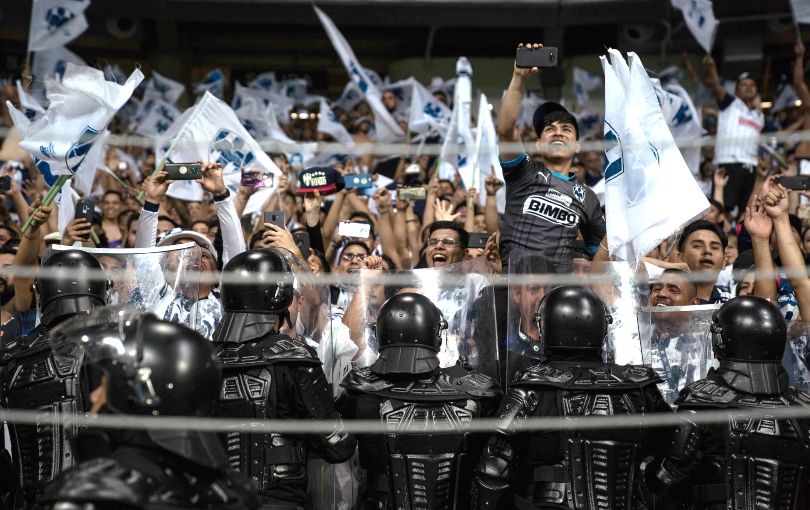
The two officers with guns either side of me jump down to push them back. Others seize the opportunity to jump onto a now unguarded van, and suddenly I’m surrounded by screaming Rayados fans bouncing up and down. I start to sweat through the blue residue of the flares. The sweat is blue and things are getting out of control, but just in time, the police escorts return and drag them away. We can finally get going and the team bus will make it to the ground.
Hovering over us are drones from local television stations, who have been broadcasting for five hours counting down to kick-off. In all of that programming, covering every cough and splutter, reporters get to the bottom of a local legend claiming if you really want someone to fail, you should bury a chicken head on their property. A Tigres-supporting builder had concealed one in Monterrey’s new stadium, but a Rayados fan is filmed digging one up to end the hoodoo. Monterrey hadn’t lifted a trophy since moving home in 2015, and some people were starting to believe that it was cursed.
Then, as 30 blue flares are set off in a line from the overpass above and the bus moves forward again, a group of tattooed, bare-chested, fly-looking lads stand right behind our truck and cross their arms while staring straight ahead. One gestures to the rest to leave whatever their problem is for another day.
It’s an unnerving, exhilarating experience ahead of the second leg of a continental cup final, yet the game is virtually unknown in Europe.
A 1-0 win for Monterrey in the first leg at Estadio Universitario – seven miles across town – has given them an advantage their supporters want to press home with this magnificent spectacle of noise and colour.
But how did we end up in Mexico in the first place? FFT was in Madrid in March to cover Real Madrid vs Ajax, one of the greatest games of the season. The night before in Madrid’s Mercado San Miguel, we stood at a table eating tapas when a large Mexican family arrived. Conversation revealed they were from Monterrey, where England played all three of their group games at the 1986 World Cup.
They were interested in football, the family split between Tigres and Monterrey. The two beautiful daughters were also social media stars in Mexico with half a million followers, and the grandmother was a novelist. They were like the Mexican Kardashians. Father and son had purchased tickets for Madrid vs Ajax from Real’s website. They got lucky there.
They asked what I knew about Mexico. Embarrassingly little, it turned out, beyond the clichés of El Chapo, a wall on the US border, tequila, Zapatistas, Corona, Hugo Sanchez, Javier Hernandez, Cuauhtemoc Blanco, American tourists in Cancun, crime in Acapulco and fajitas. When one of the girls revealed her boyfriend was a senator, my first reaction was, “Isn’t it dangerous to be a politician in Mexico?”
They shook their heads and laughed.
“Is this really your perception of our country?” laughed the father, Jorge. “You have to watch the Clasico Regiomontano between Monterrey and Tigres. Mexico is a big football country. If you come, you will see a very different Mexico to the one you read about in the international media.”
The idea certainly appealed, but it wasn’t a big enough story to fly over for from Europe. But when FFT asked me to chase Diego Maradona in Mexico at the same time as the two Monterrey giants were powering themselves towards a first CONCACAF Champions League final against each other, the stars began to align.
“Hi, remember that English journalist you recently met in Madrid…” began the email.
“We’d love to see you,” came the reply.
After tracking down Diego managing second-tier Dorados de Sinaloa in Culiacan, our small Calafia Airline plane descends above the sharp-forested mountains which surround Mexico’s third-biggest city of 1.1 million, in a fast-growing metropolitan area of 4.6m.
Monterrey is one of Mexico’s wealthier cities, its array of skyscrapers including the country’s tallest. It’s an indicator of current affluence for a place long associated with steel production.
“People in Monterrey have a chip on their shoulder as they think the media is too Mexico City-centric,” says Tom Marshall, a journalist from Rochdale who has lived in Guadalajara and covered the Mexican game for a decade. “People in Mexico City look down on them and consider them provincial, American influenced and tight-fisted.”
Monterrey is only 100 miles from the Texan border, far closer than the 500 miles to Mexico City.
“In football, Monterrey has arguably the best two teams not just in the country, but the whole continent,” adds Marshall. “They have spent a lot of money and feel overlooked.”
Eduardo Vargas (signed from Hoffenheim), Enner Valencia (West Ham) and Andre-Pierre Gignac (Marseille) joined Tigres from wealthy European clubs on hefty salaries.
Gignac was the biggest surprise, a French international striker who had never played outside France before he joined Tigres, aged 29, in 2015. He had just finished the season as Ligue’s 1’s second-highest scorer behind Lyon’s Alexandre Lacazette.
Despite being linked with a transfer to Arsenal, Liverpool and Dynamo Moscow, he settled on Tigres, saying he wanted to win the Copa Libertadores. Within a month, he scored to help them reach the final. He has become a star – hitting 100 goals in 170 matches – and is happy living in Monterrey, a city long considered safe. He suggested a booming Monterrey was going to be like Dallas in 10 years, and has formed a bond with the club’s hardcore fans.
Monterrey’s money traditionally came from heavy industry and there is still a steel plant in the city, while the cash for the two football giants comes from two local companies operating on a global scale.
Tigres are backed by CEMEX, the third biggest cement company in the world, while Monterrey are funded by FEMSA, the largest independent Coca-Cola bottling group on the planet and second-largest shareholder in Heineken. FEMSA employ 180,000 people; CEMEX 50,000.
No Mexican side boasts bigger home crowds – Monterrey and Tigres averaged league attendances of around 42,000 in 2018-19 – yet neither are considered to be among the nation’s big four clubs of Club America, Chivas, Cruz Azul or Pumas.
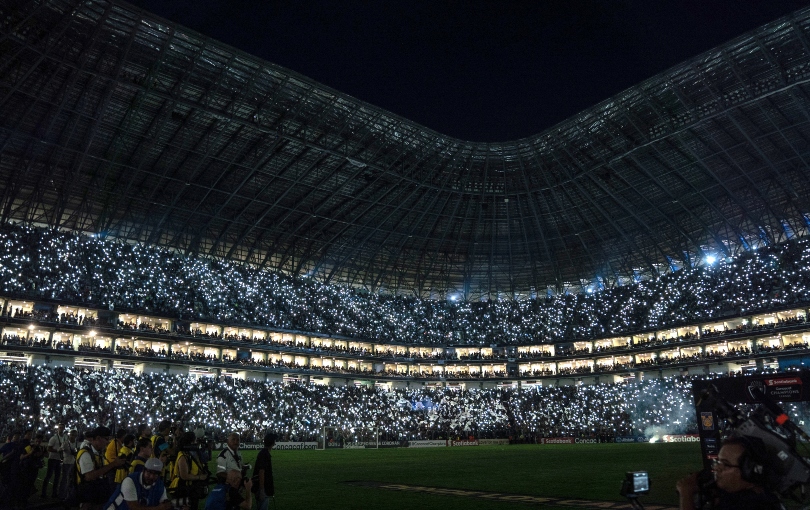
The demographics of their support have long blurred like in so many football cities: Tigres were the team of the working class, and Monterrey the middle. Both are linked to universities.
Both are desperate to win the CONCACAF Champions League, too – a tournament which brings together the top teams from North America, Central America and the Caribbean.
Mexican sides are the strongest and filled three of the four semi-final slots in 2019 alongside Sporting Kansas City. MLS trio Houston Dynamo, New York Red Bulls and Atlanta United were all eliminated by Mexican teams in the last eight.
First contested back in 1962, the competition is dominated by Mexican clubs, who have won it 34 times. Costa Rican teams are next with six including Saprissa, the last non-Mexican outfit to lift the trophy in 2005. DC United and LA Galaxy are the only US champions, in 1998 and 2000 respectively. Tigres not winning the title when a dozen other Mexican clubs have is an anomaly.
Trouble is rare and away fans are dotted around the stadium here. “You couldn’t think about that for other derby games around the world, but it’s a positive of Mexican football,” says Marshall. “Loyalties will be split in families but they’ll go to games together and have a BBQ outside the ground before a game. The BBQs are famous in Monterrey, as is the goat stew. For such a passionate rivalry, I’m impressed that there aren’t more problems. That said, there was serious trouble at a match in 2018 and that was like the end of the innocence.”
The second leg of this year’s final gets underway, but it isn’t preceded by the Mexican national anthem since it’s an international tournament. That angered the Mexican government, who said, “If that’s the case, will the international organisers be paying for the police at the game, too?!”
Instead, supporters get to wave little flags left on seats. Tigres fans tease Rayados for being ‘plastic’ and for seldom selling out their ground when they have a full house every week.
The heat and altitude of Mexico City (7,300 feet above sea level) and other Mexican towns (Monterrey is 2,000 ft up) means domestic football has a slower pace than in many European countries. The fans demand attacking football, though, and the game is entertaining.
The 2,000 Tigres visitors on the top tier (there are 27,000 watching on a screen over at the Estadio Universitario) try their best but their “Tigres!” chants are hard to hear. Their team needs a goal to draw level in the tie, but there’s surprise that Gignac is on the bench.
Mexican sides were unique for participating in both the CONCACAF Champions League and Copa Libertadores until the latter changed their calendar and they pulled out. Three Mexican teams – Cruz Azul, Chivas and Tigres – have played in a Libertadores final, but none of them were able to become the first non-South American club to win it.
Negotiations are underway for their return and money will probably dictate that, but the Liga MX, the fourth-best supported league in world football and biggest outside Europe, is a huge market.
The top Mexican teams have significant traction in the States, with its 36 million Mexican Americans. Manchester United’s opening game of the 2018-19 season was against Club America in Arizona, while Chivas even had their own MLS club for a decade from 2004. The Monterrey giants have spent serious money to win trophies and Argentina is one country where they can plunder talent from football powerhouses with weak domestic currencies.
Monterrey midfielder Maximiliano Meza was a star at Independiente, who’d sold previous young prospects Sergio Aguero and Diego Forlan to Atletico Madrid and Manchester United respectively. Meza, an Argentina international who was in their Copa America squad this summer, joined Monterrey at the beginning of the year on a five-year contract.
The number of homegrown world-class players Mexican football has produced is limited, however. Outside the closed-shop top division, attendances fall sharply, and a country of 129 million which has hosted two World Cup finals and will stage a third in 2026 with USA and Canada should be doing better.
With Tigres’ Estadio Universitario (‘The Volcano’) ageing, Monterrey’s steep-sided BBVA Bancomer with two tiers of VIP seating is a shoo-in to host matches in 2026. It boasts one of the most dramatic backdrops of any stadium on the planet, as one end dips away to reveal more of the lush mountains beyond.
In the city where locals boast the Mexican wave was invented before becoming a phenomenon after the 1986 World Cup, the atmosphere is loud, friendly and unthreatening. It gets even noisier when centre-back Nicolas Sanchez converts a 26th-minute penalty to give the home side the lead and a 2-0 aggregate advantage. The better team are winning and they can count on the efforts of midfielder Carlos Rodriguez, a local lad who made his Mexico debut in March.
Fans buy pizza and beer from vendors roaming around the stadium, the American influence clear. There’s a self-confidence in Monterrey’s ascendancy as a football capital, but not everyone is buying it. Asked at half-time if this is now the biggest match in Mexican football, Gerardo Velazquez de Leon, sports editor of Universal, replies, “Absolutely not”.
“It’s important, but Chivas vs America is the most important Clasico in our country,” he continues. “Monterrey is polarised – you’re either one or the other here – whereas in Mexico City there are six or seven clubs. However, the audience levels outside Monterrey are not on a national level like with Chivas or America.”
Monterrey’s rivalry is compelling and close, with the pair’s previous six meetings either drawn or decided by the odd goal.
The Monterrey faithful want their players to attack and finish Tigres off, so they aren’t impressed when forward Aviles Hurtado is replaced by defender Cesar Montes after an hour.
Gignac, the top scorer in the first half of Mexico’s convoluted league season, emerges off the bench and scores an astonishing 85th-minute equaliser, scissor-kicking a right-wing cross into the bottom corner.
It’s a nervous final few minutes for the home fans. One more Tigres goal will snatch their first ever CONCACAF Champions League title, and there’s a late scuffle on the sideline involving members from both sides. However, Monterrey hold on and jubilant supporters start singing along to a version of 'Live Is Life', a 1985 hit for Austrian group Opus.
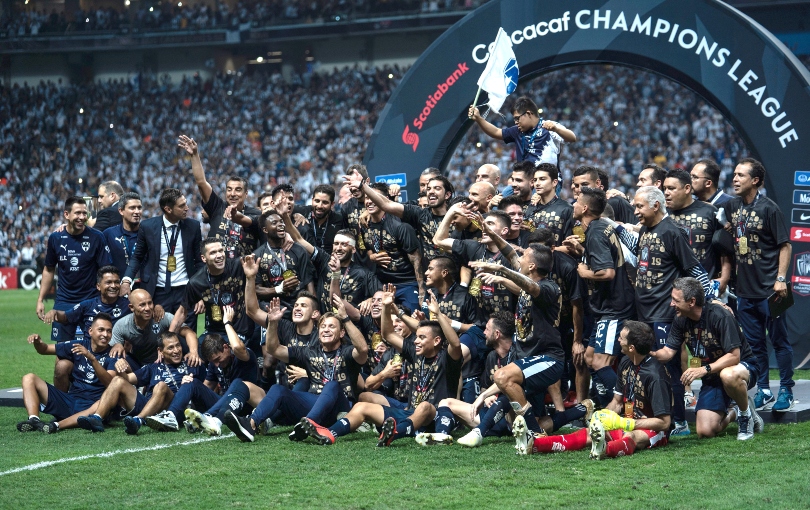
Their smartly-suited boss Diego Alonso, 44, goes crazy, gesticulating that he has huge balls to the adoring crowd. His opposite number, Tigres’ wonderfully charismatic coach Ricardo ‘Tuca’ Ferreti, is first to face the press. He only tends to appear when his team loses.
“Good evening,” says the 65-year-old Brazilian, who has played and managed in Mexico since the ’70s, though he still struggles to pronounce his r’s in Spanish and that endears him to Mexicans.
He is in his third stint as Tigre boss and is one of only two managers to oversee 1,000 Mexican league matches. He also played for Monterrey in 1986, the year England played Portugal and Morocco at the club’s old Estadio Tecnologico before Gary Lineker hit a first-half hat-trick against Poland at Tigres’ ground.
“A drama,” states Tuca. “First question, please. Ladies first, please?” There are no questions from the couple of female journalists present. “Why did you not start Gignac?” asks a male, going straight in with the question every Tigres fan want answering.
“It was my decision and it was tactical,” he replies. “The decision came from the heart.” In the mixed zone, the Tigres players head towards the team coach with little inclination to speak to journalists.
“A word for a British magazine?” catches the attention of Argentine midfielder Guido Pizarro. There aren’t many international media present.
“There’s a lot of passion here,” he says. “It’s one of the biggest derbies in all of the Americas. They’re two very big clubs.”
He’s floored and doesn’t really want to talk, but at least he stopped to give us a few words. Gignac is more bullish, declaring Tigres will win the Clausura play-offs in the second half of the season. They go on to do just that, a Gignac goal defeating Leon 1-0 on aggregate in the final.
The streets outside the stadium are packed with partying Rayados fans beeping their horns. A homecoming is planned the following day, one which is later ridiculed by Tigres supporters as there’s a relatively poor turnout. Memes showing a packed central square when Tigres last won a trophy and a few hundred people around the Monterrey bus do the rounds on social media.
The headline on the front of the El Norte newspaper reads: “The end of the curse” at Monterrey’s new arena. That night, I meet the family which inspired my visit, and the eldest daughter has brought her boyfriend, the senator. “I saw the power of football when I was trying to get elected,” says 31-year-old Samuel Garcia. “I wore the shirt of my team, Tigres, and my opponents said I should pay for using the power of the Tigres brand. They took action against me but didn’t win. I’m a lawyer!”
Two weeks later, Tigres and Monterrey meet in the play-off semi-finals to decide the Clausura champions. Monterrey win the first leg 1-0; Tigres win the second 1-0, so Tigres progress to face Leon after finishing higher in the regular season.
It was the fifth time they’d clashed in 10 weeks over a long, hot summer in what has become Mexico’s football heartland.
This article first appeared in the August 2019 issue of FourFourTwo. Subscribe to the magazine now for £9.50 every three months – just £2.90 an issue!
NOW READ…
QUIZ Can you identify these 40 European clubs by their unusual nicknames?
GUIDE Premier League live stream best VPN: how to watch every game from anywhere in the world

Andy Mitten is Editor at Large of FourFourTwo, interviewing the likes of Lionel Messi, Eric Cantona, Sir Alex Ferguson and Diego Maradona for the magazine. He also founded and is editor of United We Stand, the Manchester United fanzine, and contributes to a number of publications, including GQ, the BBC and The Athletic.
